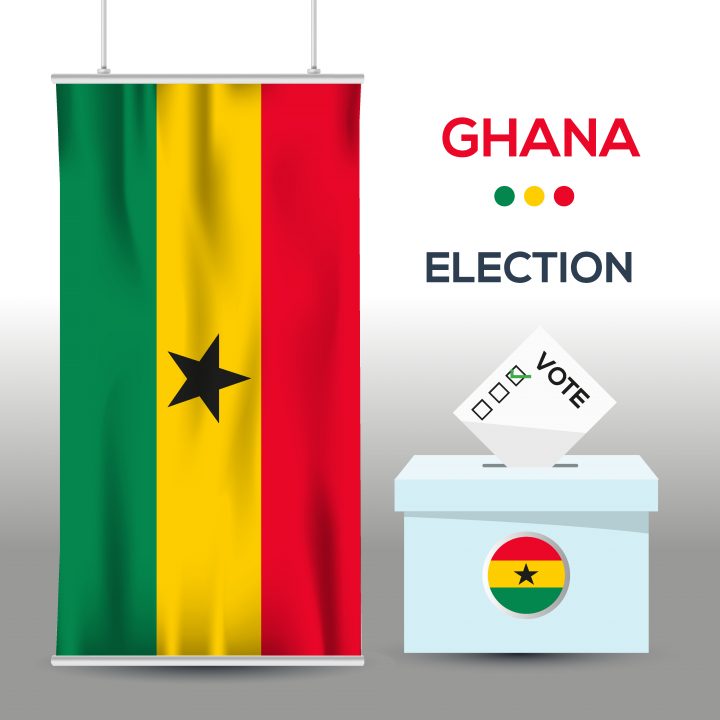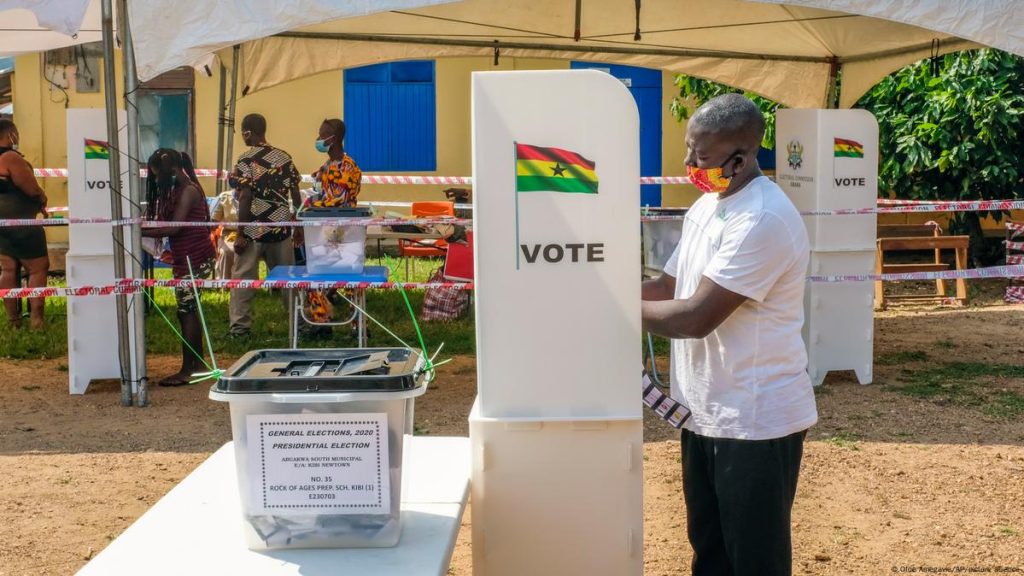Ghana: Presidential and legislative elections in a climate of uncertainty
This Saturday, December 7, nearly 18.8 million of Ghana’s 34 million or so people are being called to the polls to elect their president and parliamentarians. A double ballot in a climate of economic crisis and political and social tensions.

Explanations.
“Elections 2024 – your vote, your future.” This is the slogan of the Electoral Commission of Ghana. Its goal: to encourage the nearly 18.8 million people registered on the lists to go to the polls on December 7, the date of the first round of the general elections – a second round will take place, if necessary, within the following 21 days.
This double ballot will allow for the renewal of Parliament. But it will also and above all mark the end of the second and final term of Nana Akufo-Addo (2017-2024), 80 years old, at the head of this state rich in raw materials (cocoa, gold, oil) and considered a model of political stability in West Africa despite being mired in a deep economic crisis.
Two favorites accustomed to power
To succeed him, 12 candidacies have been validated*. But in a country that, since the democratic transition of 1992, has been led alternately by the New Patriotic Party (NPP) and the National Democratic Congress (NDC), the suspense seems limited to the following question: who between Mahamudu Bawumia, Akufo-Addo’s vice-president since 2017 and candidate of the party in power (NPP), or John Mahama (NDC), a former president (2012-2017) who wants to return to his post, will be in charge for the next four years?
On one side, there is a 61-year-old seasoned economist: the latter advocates the digitalization of activities to get Ghana out of the impasse but his government has proven powerless in the face of the slump that has lasted for five years. On the other, a 66-year-old political veteran: John Mahama promises to “bring the country back to its former state” Akufo-Addo but his own mandate has been marked by financial problems and corruption scandals.
“The two major parties can still count on millions of supporters”
In this context, can the two sixty-year-olds draw crowds to the polling booths? The turnout for the presidential and parliamentary elections was 79% in 2020 and 2012 and 69% in 2016.
“It is clear that after two alternations, Ghanaians are a little disappointed with the two main political parties, mainly because they have not been able to fulfill their missions, particularly in terms of managing the economy on issues such as job creation, reducing inequalities or maintaining low prices,” underlines Lionel Ossé Éssima, political research analyst for the CDD-Ghana observatory, based on data from the Afrobarometer polling institute. However, even if the two parties have not been able to keep their promises, the Ghanaian political landscape is so polarized between the NDC and the NPP that these two parties can still count on millions of supporters across the country. Added to this is the fact that the small political parties do not seem to be well organized or do not have the same resources as the two “monsters” to mobilize people across the country.”
Young people, the X factor of the election?
The few other candidates who have emerged in recent months (Nana Kwame Bediako, Alan Kyerematen…) seem indeed set to collect crumbs. The latest polls also predict a close result between Bawumia and Mahama.
In these conditions, to decide between the two favorites, the youth vote looks set to be preponderant, in a country where 56% of the population is under 25 and where the median age is 21.
John Osae-Kwapong, project director at the think tank The Democracy Project, believes that this age group will be there on December 7: “According to the most recent available empirical data, published in October, on abstention, 19% of 18-25 year-olds indicate that they will not vote. Eight out of ten indicate that they will vote. This is a good figure to affirm that the youngest voters are showing real interest in these elections. If we also judge by historical data, this demographic group has generally shown interest in the elections.” On the other hand, the researcher struggles to know whether young people can influence the public debate and the campaign: “The weight of young people in our political spaces is quite difficult to assess, mainly because we do not observe efforts of mobilization and collective action on the part of young people to pursue key political objectives. Both [major] political parties have youth wings and networks within our higher institutions, but their activities are generally designed to support the political parties.”



